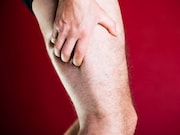RVO less likely for those receiving compression within 24 hours of diagnosis of deep vein thrombosis
THURSDAY, Oct. 4, 2018 (HealthDay News) — The likelihood of residual vein obstruction (RVO) is reduced with immediate compression after diagnosis of deep vein thrombosis, according to a study published online Sept. 24 in Blood.
Elham E. Amin, from Maastricht University in the Netherlands, and colleagues examined whether compression therapy immediately after diagnosis of deep vein thrombosis affects the occurrence of RVO. Data were included for 592 adult patients from 10 academic and nonacademic centers in the Netherlands. Patients had objectively confirmed proximal deep vein thrombosis of the leg. They received no compression or acute compression within 24 hours of diagnosis of deep vein thrombosis with multilayer bandaging or compression hosiery.
The average time from diagnosis until RVO assessment was 5.3 months. The researchers found that the percentage of patients with RVO was significantly lower among those who received compression therapy immediately after diagnosis of deep vein thrombosis (46.3 versus 66.7 percent; odds ratio, 0.46). Patients without RVO had lower prevalence of post-thrombotic syndrome (46 versus 54 percent; odds ratio, 0.65). There was no significant correlation for recurrent venous thrombosis with RVO.
“Immediate compression should therefore be offered to all patients with acute deep venous thrombosis of the leg irrespective of severity of complaints,” the authors write.
Copyright © 2018 HealthDay. All rights reserved.








